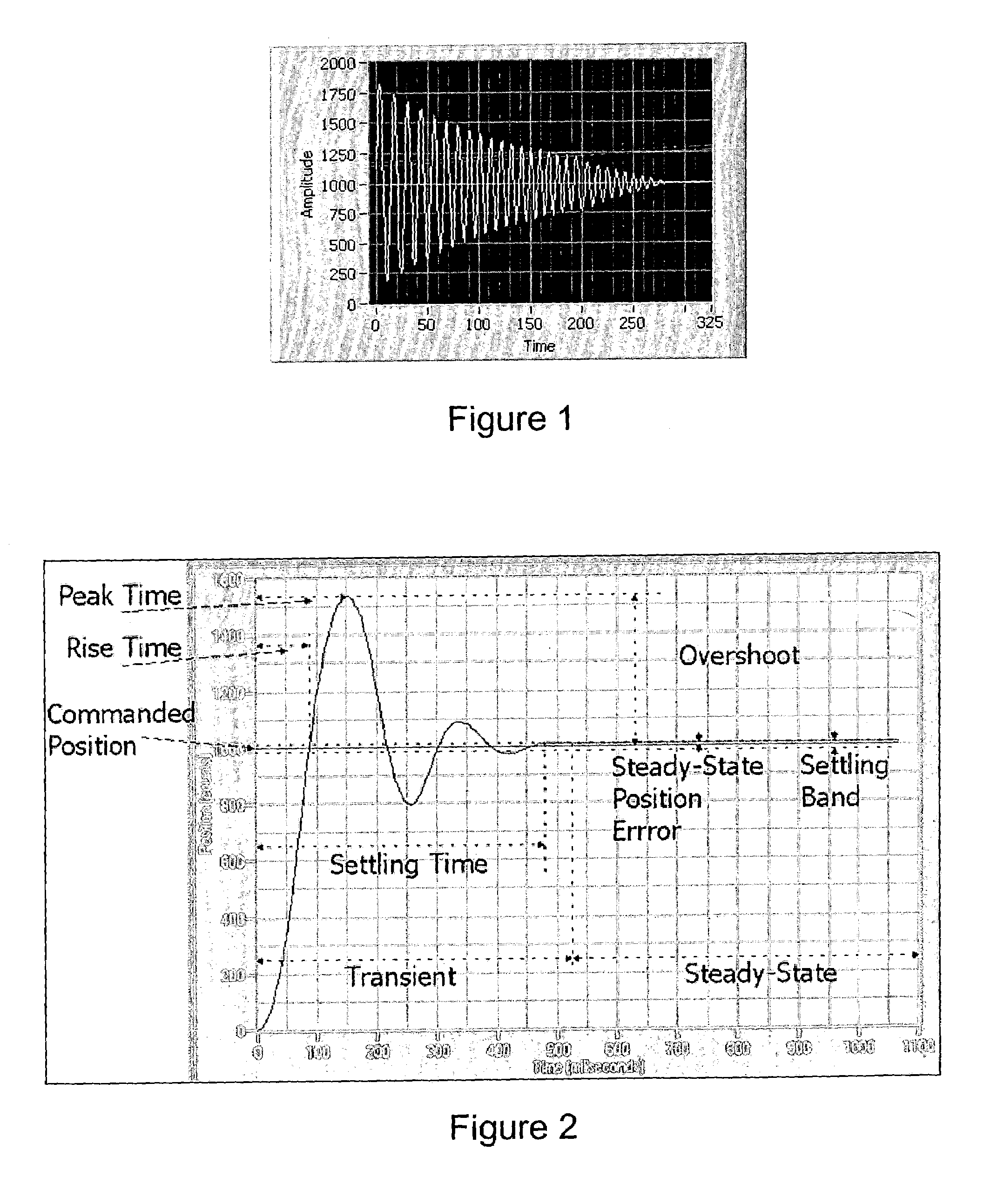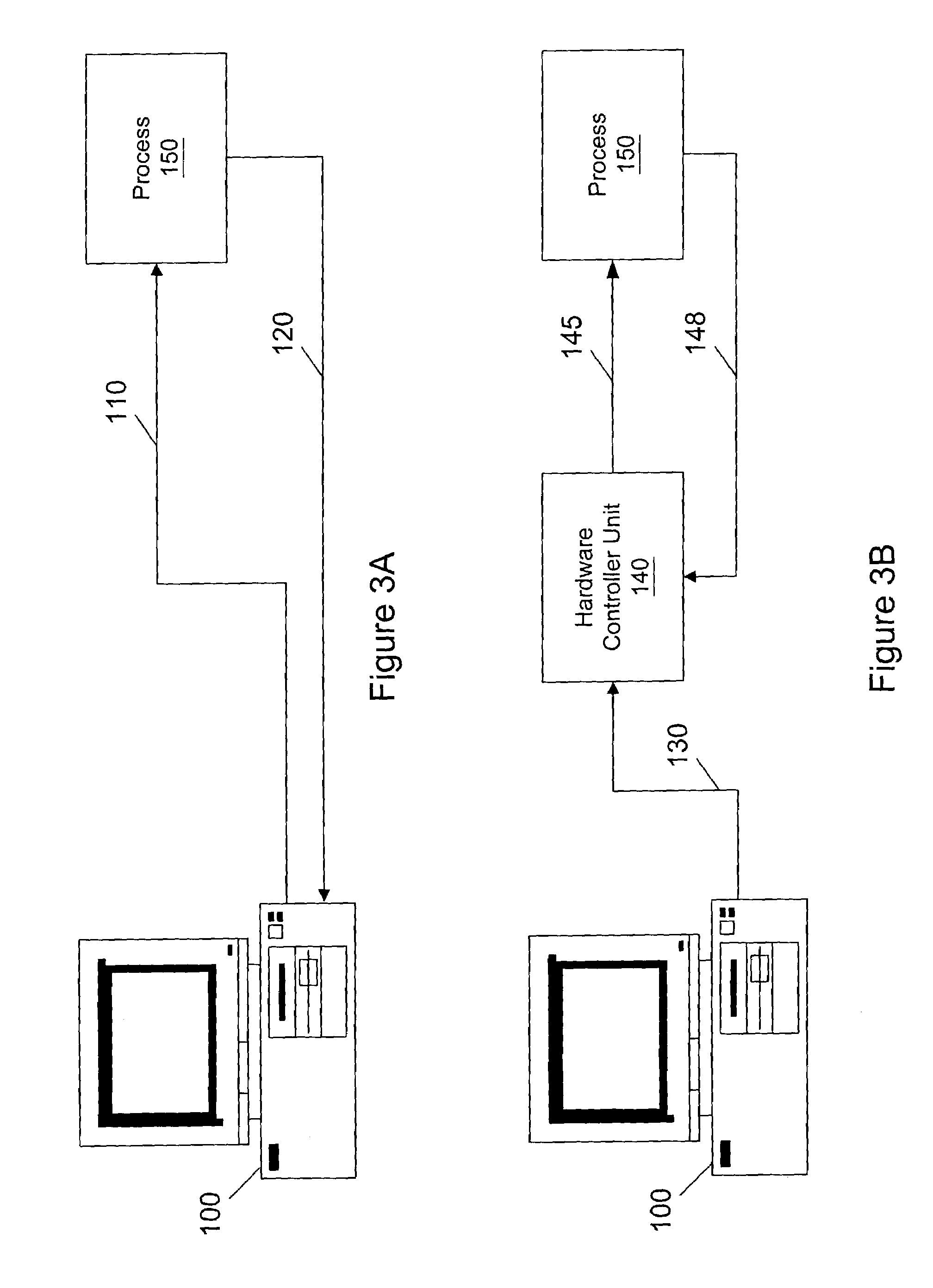Automatic tuning of motion controllers using search techniques
a technology of motion controller and search technique, applied in the direction of electric controllers, program control, instruments, etc., can solve the problems of not providing any guarantees about the achievement of position trajectory, all of these methods have substantial drawbacks, and none of these techniques effectively account for many real-world nonlinear effects
- Summary
- Abstract
- Description
- Claims
- Application Information
AI Technical Summary
Benefits of technology
Problems solved by technology
Method used
Image
Examples
first embodiment
[0082]FIG. 3A illustrates the system of the present invention that includes a computer 100, and process 150. Computer 100 supplies actuating signals to the process 150 through actuating bus 110. It is noted that a D / A conversion device (not shown) is preferably included in this embodiment to convert the actuating signals from a digital form to an analog form. Furthermore, computer 100 senses the process variable PV through measurement bus 120. Data acquisition logic (not shown) such as an A / D conversion device is preferably employed to convert the process variable from analog to digital form. Thus, computer 100 operates on a stream of samples of the process variable (PV).
[0083]In one embodiment, the controller may be implemented in software, i.e., a controller program, which may be stored in a memory of the computer 100, and executed by a processor comprised on the computer 100. An autotuning algorithm may also be implemented in software, i.e., in an autotuning program, stored and e...
second embodiment
[0085]FIG. 3B illustrates the system of the present invention which includes computer 100, process 150, and external hardware controller unit 140, e.g. controller. Thus hardware controller unit 140 may implement the controller, either in software or in programmable logic. Computer 100 is coupled to hardware controller unit 140 through a signal bus 130. Hardware controller unit 140 drives process 150 with actuating signal u through process bus 145. Also, hardware controller unit 140 senses process variable PV through sensing bus 148. Hardware controller 140 preferably includes an A / D conversion device to convert the process variable received via sensing bus 148 from analog to digital form.
[0086]In this second embodiment of the present invention, the computer 100 sends a setpoint signal SP, which is the target equilibrium value of the process variable PV to the hardware controller unit 140 through signal bus 130. The hardware controller unit 140 performs at least a portion of the auto...
PUM
 Login to View More
Login to View More Abstract
Description
Claims
Application Information
 Login to View More
Login to View More - R&D
- Intellectual Property
- Life Sciences
- Materials
- Tech Scout
- Unparalleled Data Quality
- Higher Quality Content
- 60% Fewer Hallucinations
Browse by: Latest US Patents, China's latest patents, Technical Efficacy Thesaurus, Application Domain, Technology Topic, Popular Technical Reports.
© 2025 PatSnap. All rights reserved.Legal|Privacy policy|Modern Slavery Act Transparency Statement|Sitemap|About US| Contact US: help@patsnap.com



